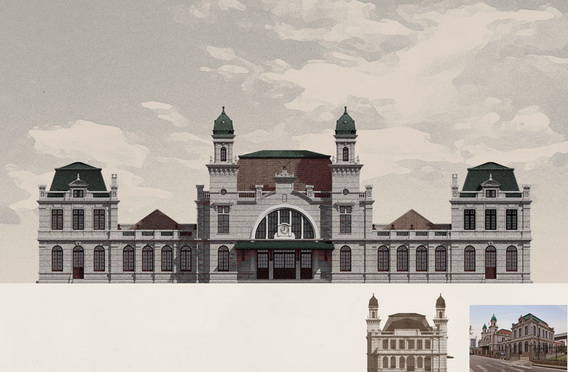Current position: > ENGLISH > COD Application Verification > Part9 >
[9.6.2]Maker Education First Applied to over 60 Primary and Secondary Schools of Wuhan
Release time:2017-09-07 17:11
|
Maker Education shall be the "General Education". Maker Education is not only used to cultivate inventors; what's more, it aims to train the spirit, thinking and skills of innovation of students, so it should be a kind of "general education". Maker Education can be understood in two ways: "special education for cultivating makers" and "education similar to Maker cultivation". The significance of Maker Education, in my opinion, should be similar to the latter. Maker Education is profoundly related with "STEAM Education" advocated by the American Government. STEAM is an acronym of five words: Science, Technology, Engineering, Arts and Mathematics, which is a kind of comprehensive education integrating multiple subjects. Different from the traditional "lecture-type" education, STEAM Education focuses on the relation between learning and the real world and the learning process, rather than the test scores. Maker Education and STEAM Education achieve the same results by using different methods, both of which highlight practice; that is to say, children can construct the knowledge of science, technology, engineering, arts and mathematics in the process of making things. (Jiang Xinhua, Director of Research Department of Educational Informationization Development Center of Hubei Province)
Expert opinion Shenzhen Maker Education is worthy of learning. For the purpose of the long-term development, Maker Education must establish the curriculum system and evaluation standard matched with it. It is understood that Maker Education for teenagers tries to be carried out in Wuhan, Yichang, Shiyan and Huangshi, etc., but these areas and schools act in their own way, and no detailed regulations are formulated for guidance. The systems of professional title evaluation and workload evaluation, etc. are not perfect, so that some teachers are reluctant to make efforts. Given that Shenzhen Maker Education starts early and develops quickly, Wuhan can learn from the Guidelines promulgated by Shenzhen for the purpose of developing Maker Education in Wuhan. In October, 2016, Shenzhen issued the Guidelines for the Curriculum Construction of Maker Education in Primary and Secondary Schools of Shenzhen (Trial) and the Guidelines for the Construction of Maker Education Practice Rooms in Primary and Secondary Schools of Shenzhen (Trial), which is the first time that a domestic city issued the special guidelines for the construction of Maker Education in primary and secondary schools. As pointed out by the Guidelines for the Curriculum Construction, Maker Education, as a unique mode of innovative learning, shall actively adapt to each subject, including "theoretical discipline" like integrated practice, artistic creation and information technology courses, etc. and "technical discipline" like language, mathematics, physics and chemistry courses, etc. Therefore, the teaching field of Maker Education courses can be inserted into many spaces of teaching organizations and also can integrate different subjects. The Guidelines for the Curriculum Construction describes the curricula of Maker Education on the aspects of introduction, curriculum objectives, curriculum nature, elements and structure of curriculum, curriculum setting, curriculum development, curriculum implementation, learning evaluation and implementation guarantee and set the corresponding stage objectives of primary schools, junior high schools and senior high schools according to 3 dimensions, i.e. "inheritance of craftsman's spirit", "exercise of maker ability" and "enlightenment of industrial knowledge". The Guidelines for the Construction of Maker Education Practice Rooms provides systematic direction for the construction of Maker Education practice rooms on the aspects of overall requirements, site selection and decoration, configuration of tools and consumables, cloud service platform, curriculum construction, organization and management and selection of providers.
http://www.hubei.gov.cn/2015change/2015sq/sq/201701/t20170116_940858_1.shtml |
That may be of interest to the article
- Ruopu CITY1000 Creative Projects
- Wuhan Design Biennale
- Wuhan Fashion Week 2018
- Great Rivers Forum
- Engineering Survey and Design Institute Dir
- Wuhan Night held in Beijing Design Week
- Message from Ms Irina Bokova on the Interna
- China's Dinosaur Egg Museum Blends the Anci
- Wuhan: Construct "Five Cultural Cities"
- 2016 Work Report of Wuhan Municipal Governm
- Regulations of Wuhan Municipality on Protec
- The WeChat Official Account of Wuhan Planni
- Wuhan Sets Up a Cultural Enterprise Credit
- Wuhan’s New 30 Articles Provides that At
- Wuhan Industrial Design Development Fund Pr
- Report on the Work of the Government and Po



